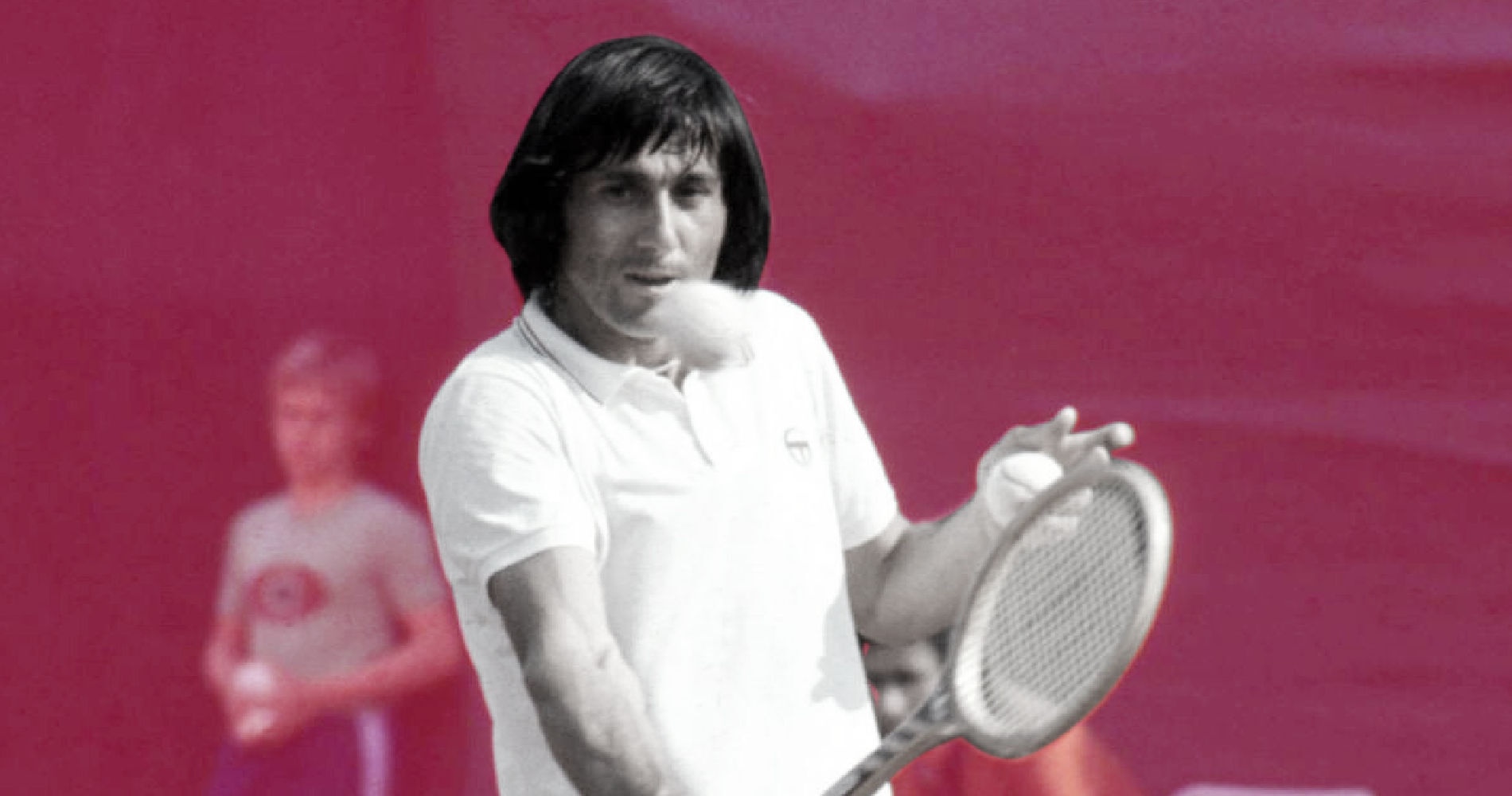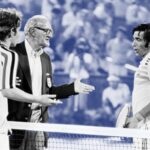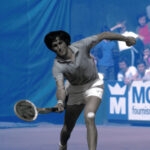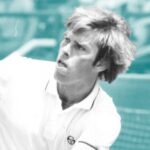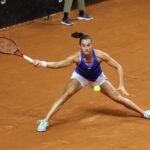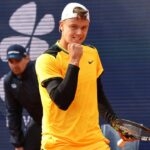March 26, 1976: the day Ilie Nastase was famously defaulted in Palm Springs
Every day Tennis Majors takes you back in time to celebrate a great moment in tennis history. Today, we go back to 1976 to witness how, after a week of antics, gamesmanship and provocation, Ilie Nastase was finally defaulted from the American Airlines Games quarter-finals, while he was trailing 6-3, 2-1 against Roscoe Tanner
 Ilie Nastase (ROU) – Tournoi de Roland Garros – ATP Tour – Paris – 30.05.1979 – Tennis – hauteur action revers 01018906
Ilie Nastase (ROU) – Tournoi de Roland Garros – ATP Tour – Paris – 30.05.1979 – Tennis – hauteur action revers 01018906
What happened exactly
On this day, March 26, 1976, in Palm Springs, Ilie Nastase, the first player to have ever occupied the top spot of the ATP rankings, was defaulted from his quarter-final clash against Roscoe Tanner. The Romanian had already received several warnings from the tournament referee, Charles Hare, in his previous match, and this time, he found no mercy and was disqualified in the early second set.
The players involved: Ilie Nastase and Roscoe Tanner
- Tempestuous and mercurial Romanian Ilie Nastase
Ilie Nastase, born in 1946, started competing internationally in 1966, playing doubles with fellow Romanian Ion Tiriac, and he obtained his first remarkable results in singles in 1969, when he managed to beat great players such as Tony Roche and Stan Smith. He played his best seasons between 1971 and 1976.
In these years, loved by the crowds and despised by most of the other players because of his attitude, he started by reaching the Roland-Garros in 1971, where he was beaten by Jan Kodes (8-6, 6-2, 2-6, 7-5). After another major final lost at Wimbledon in 1972 (lost to Stan Smith in five sets, 4-6, 6-3, 6-3, 4-6, 7-5), Nastase claimed his first Grand Slam title at Forest Hills a few months later, defeating Arhur Ashe in the final (3-6, 6-3, 6-7, 6-4, 6-3).
The following year, after triumphing at Roland-Garros against Nikki Pilic (6-3, 6-3, 6-0), he became the first player to become world No 1 in the newly established ATP rankings. He held on to this spot for 40 weeks.
Nastase obtained his best result at the Masters Cup, a tournament he won three times, in 1971, 1972 and 1973. Nastase was known to be a great entertainer, but his unpredictable behaviour was controversial amongst his peers, and although the crowds generally liked his antics, he often went too far and was booed as a consequence. An entire book would not be enough to tell all the anecdotes about “Nasty”. Constantly arguing with the officials, he could also imitate his opponents, taunting and badmouthing them until they lost their temper.
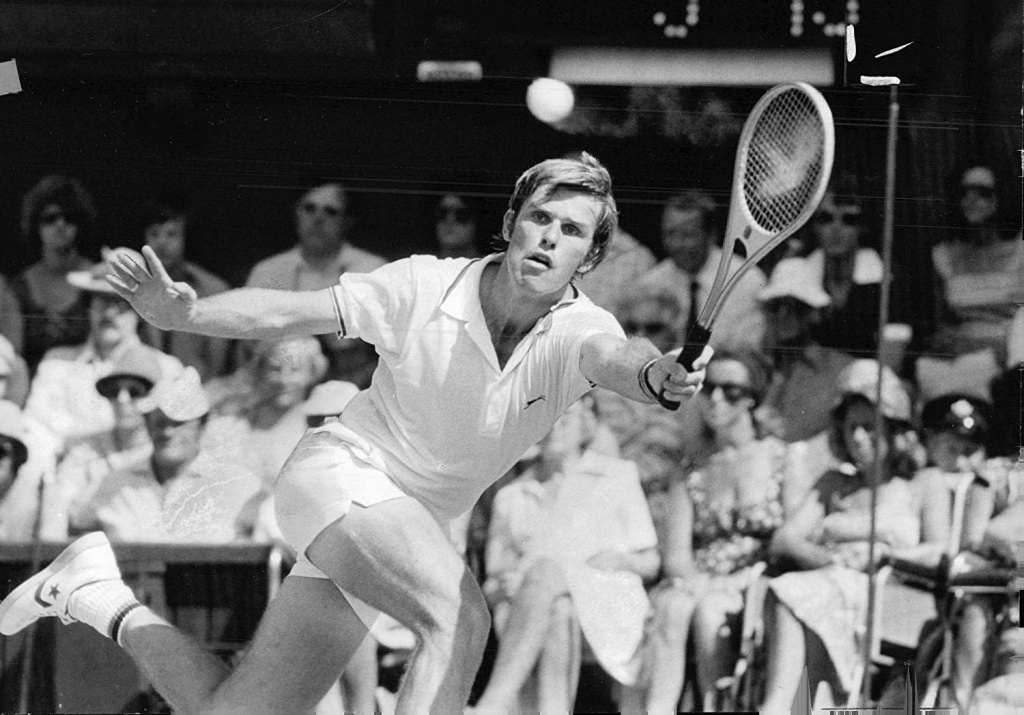
- Rocket Roscoe Tanner
Roscoe Tanner, the first player in tennis history to become mostly famous because of his deadly lefty serve, which earned him the nickname “The Rocket”, was born in 1951. He turned pro in 1972, and he soon reached his first final, in Los Angeles, defeated by Stan Smith (6-4, 6-4). In 1974, after he finished runner-up to Rod Laver in Palm Desert (6-4, 6-2), he claimed his first title, defeating Arthur Ashe in the Denver Open final (6-2, 6-4).
The same year, he obtained his first remarkable Grand Slam performance, reaching the US Open semi-finals (lost to world No 1, Jimmy Connors, 7-6, 7-6, 6-4). Connors then defeated Tanner in the Wimbledon semi-final in 1975 (6-4, 6-1, 6-4). In March 1976, the Tennessee-born left-hander was world No 13.
The place: The American Airlines Games, Palm Springs
The American Airlines Games, held for the first time in Tucson, Arizona in 1974, became the ancestor of the Indian Wells Masters 1000 when it moved to California in 1976. It was played on indoor hard courts at the Mission Hills Country Club, and its first two champions were Australian – John Newcombe and John Alexander.
The facts
In March 1976, Ilie Nastase, although he had started the year much better than 1975, defeating Jimmy Connors in back-to-back finals at the US National Indoor and the Celebrity-Pro, was not the same player who dominated the game in 1973. The Romanian, famous for being the first world No 1 in the history of the ATP rankings, had not obtained any remarkable results in a Grand Slam tournament for several years, and he was now mostly known for his outrageous gamesmanship.
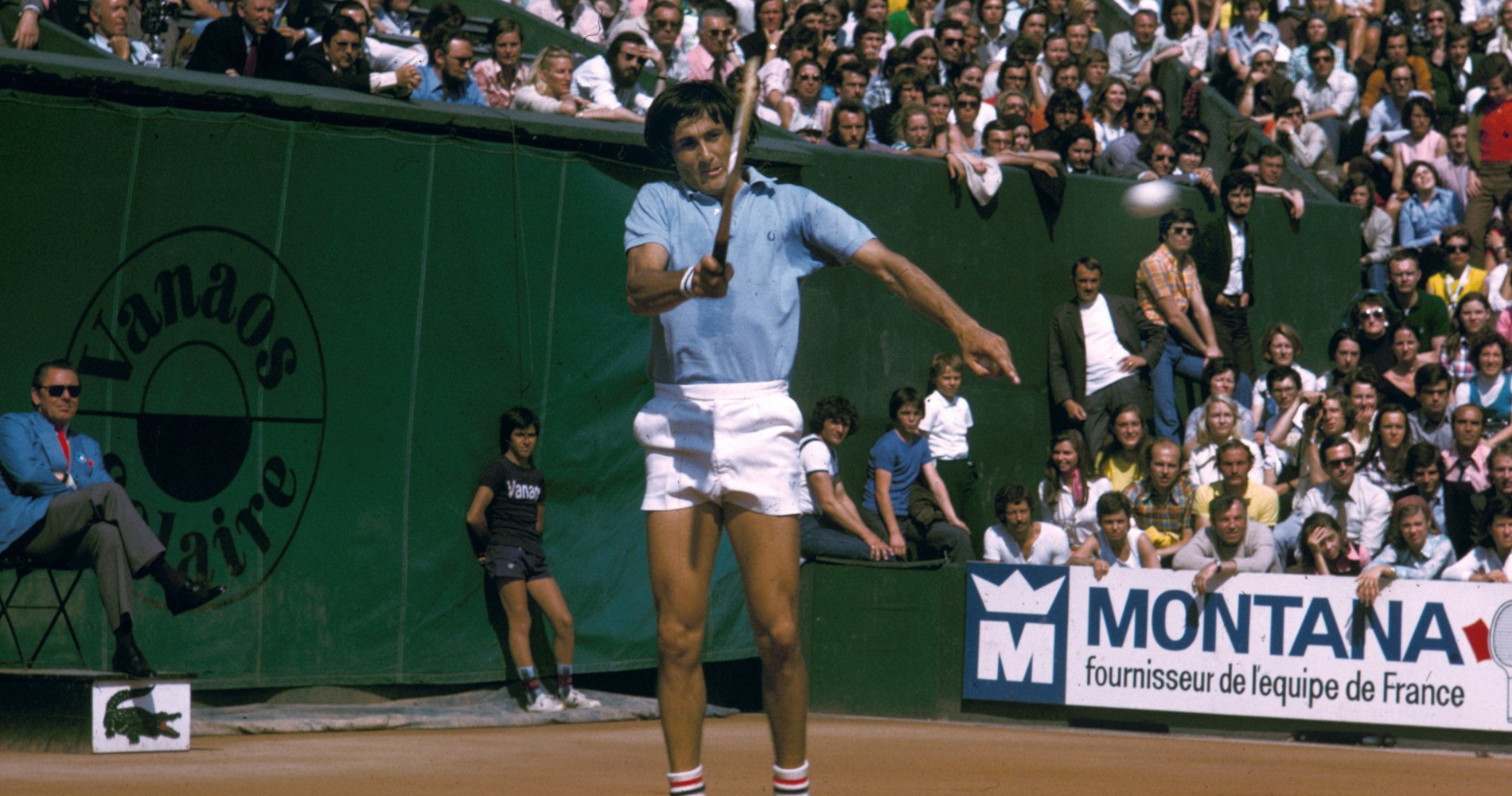
At the American Airlines Games, in California, Nastase surpassed himself in terms of unsportsmanlike behaviour. At the end of his round of 16 win against Dick Stockton, during which the Romanian saved a match point, there was no handshake.
“It’s hard to play when a guy is doing the things Nastase does on the court,” explained his opponent, quoted by The New York Times. “He did everything to win the match in an unfair way. He stalled around. He called the umpire and referee every name in the book. He called me names. There’s no excuse for it. They let him get away with it.”
In the quarter-finals, Nastase faced Roscoe Tanner. Tanner knew what to expect from Nastase, however, having seen what had happened in the previous match, he was determined to enforce the rules. He explained his mindset before the match in his autobiography, Double Fault: my rise and fall, and my road back.
“Look, I’m going to play this fair and square,” he told the tournament referee, “but if Nastase gets his three warnings, on the next thing, I’m quitting, so you will have to default one of us. I’m not going to be the dummy who stands out there and goes through all this and loses.”
When the match began, Tanner took control early on, and Nastase soon felt that his only chance was to put up more antics to try and break his opponent’s concentration. However, Charles Hare, the tournament referee, was not in the mood to let him mess around once again.
“I had to go on the court for an hour Wednesday and for an hour yesterday,” he explained later. “Today I was forced to sit on the court from the first minute. I’ve never known any referee, except in Davis Cup, to have this much pressure.”
It wasn’t long before Nastase received the warnings Tanner had anticipated before the match.
“The first time I had to speak to him he bowed, giving me his behind. I gave him a warning,” said Hare. “In our second altercation, he called me a four‐letter word. Nobody can call me that. Then he actually left the court, sat in a box and put his feet up on the railing. If you leave the scene of action, under the rules you are defaulted.”
Tanner then did exactly what he had told the referee before: he walked back to his chair and put his racquets away, digging his bag to find the rule book. However, there was no need for that: the referee had already defaulted Nastase from the American Airlines Games.
“I think the answer is for him to be taken out of the game for a while,” added the referee, who regretted that fines had very little impact on players with big incomes like Nastase.
What next
Roscoe Tanner would make his way into the final of the American Airlines Open, where he was defeated by Jimmy Connors (6-4, 6-4). He would claim his first and only Grand Slam title in January 1977 at the Australian Open, defeating Guillermo Vilas in a final of left-handers (6-3, 6-3, 6-3). The American would reach one more major final, also on grass, defeated by Bjorn Borg at Wimbledon in 1979 (6-7, 6-1, 3-6, 6-3, 6-4). After his retirement, Tanner would unfortunately become famous because of his record of conflicts with the law, which would lead him to jail on several occasions.
1976 would be Nastase’s last great year on the tour, as he would finish runner-up to Bjorn Borg at Wimbledon (6-4, 6-2, 9-7), before reaching his last Grand Slam semi-final at the US Open (beaten again by Borg, 6-3, 6-3, 6-4). Following his default in Palm Springs, rules would be reinforced in ATP Tournaments, a change which Bud Collins, the famous tennis commentator, would call “the Nastase Act”. However, his antics would peak at the 1979 US Open, in a infamous match-up lost to John McEnroe.
